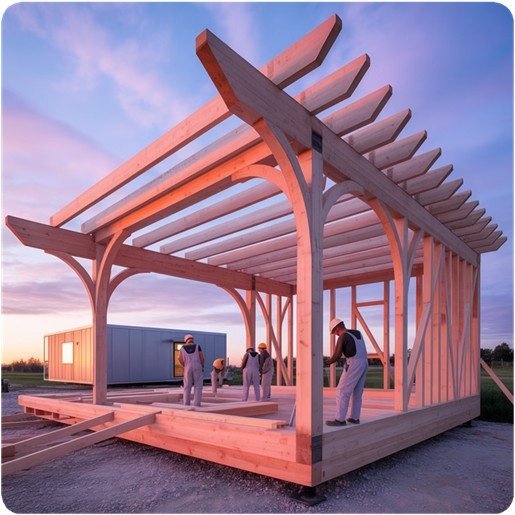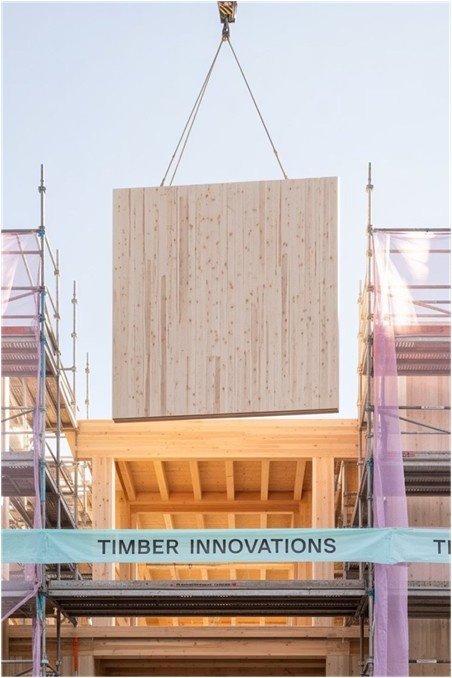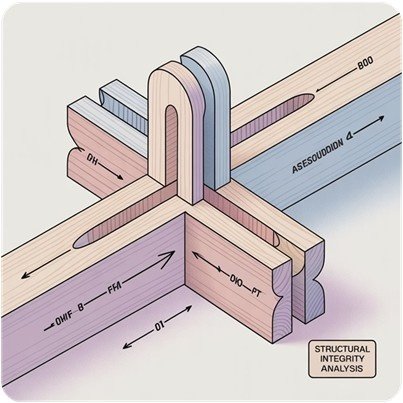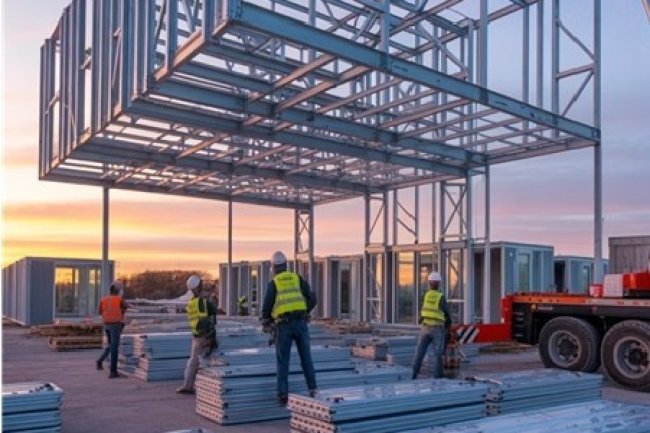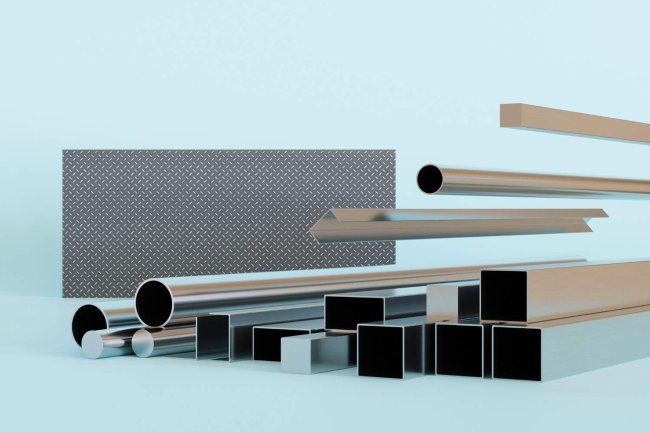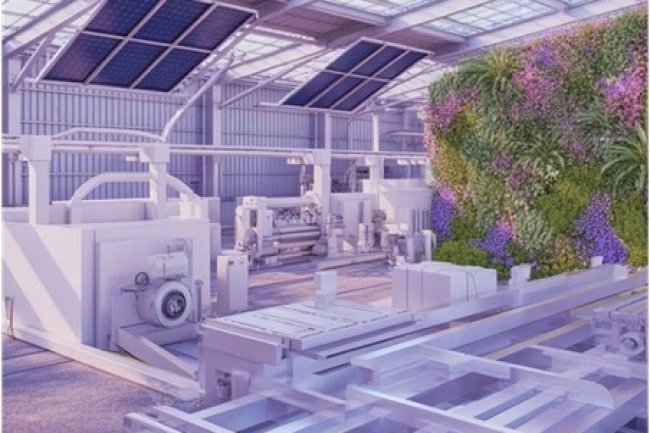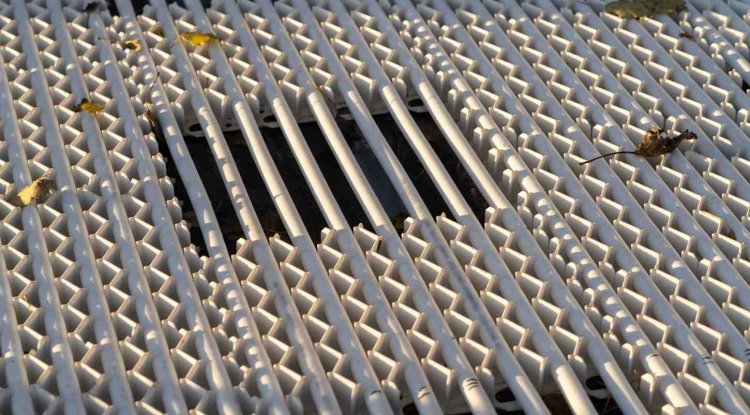Understanding Structural Wood Joints: Traditional Methods in Modern Design
Wood joinery represents the marriage of ancient craftsmanship with contemporary engineering precision. From timber-framed barns that have stood for centuries to modern mass timber skyscrapers, structural wood joints remain fundamental to creating durable, sustainable buildings that stand the test of time.
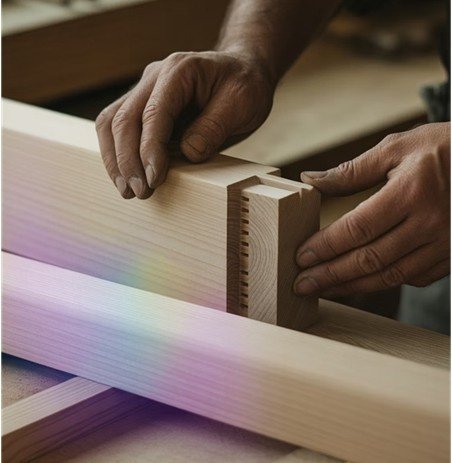
The Foundation of Wood Construction
Engineering HeritageStructural wood joints have evolved from medieval carpentry guilds to today's precision-engineered connections. Modern structural engineers combine time-tested joinery principles with advanced load calculations, ensuring each connection meets contemporary building codes while honoring traditional craftsmanship. Today's wood construction projects demand joints that balance structural integrity, cost efficiency, and constructability—whether designing residential frames or complex commercial timber structures. |
|
Essential Traditional Joint Types
Mortise & Tenon
The cornerstone of timber framing, featuring a projecting tenon that fits precisely into a mortise cavity. Provides exceptional tensile and compressive strength for beam-to-post connections in heavy timber construction.
Dovetail Joints
Interlocking wedge-shaped connections that resist withdrawal forces. Commonly used in sill plates and foundation connections where lateral stability is critical for structural performance.
Scarf Joints
End-to-end connections that join timber pieces along their length. Essential for creating continuous beams and extending structural members beyond available lumber lengths in commercial projects.
Modern Applications in Structural Design
|
|
Contemporary structural engineering has revolutionized traditional wood joints through advanced modeling and fabrication techniques. Computer-aided design (CAD) allows engineers to optimize joint geometry for specific load conditions, while CNC machinery ensures precise cuts that rival traditional hand-crafted quality. Mass timber construction—featuring CLT panels and glulam beams—relies heavily on sophisticated joint design to achieve the structural performance required for mid-rise and high-rise buildings. These projects demand careful coordination between architects, engineers, and fabricators to ensure joint details meet both aesthetic and structural requirements. |
Load Transfer and Structural Performance
Engineering ConsiderationsEffective wood joint design requires thorough analysis of force distribution, considering compression perpendicular to grain, shear capacity, and connection stiffness. Modern building codes specify minimum bearing areas and require detailed calculations for custom connections. Structural engineers must evaluate factors including wood species, moisture content, load duration, and environmental conditions. Advanced finite element analysis (FEA) helps predict joint behavior under various loading scenarios, ensuring reliable long-term performance. |
|
BIM Integration and Digital Detailing
3D Modeling
Advanced BIM software enables precise visualization of complex wood joints, allowing engineers to identify potential conflicts and optimize connections before fabrication begins.
Parametric Design
Automated joint libraries streamline the design process, ensuring consistent details across projects while maintaining flexibility for custom applications and unique structural requirements.
Fabrication Coordination
Digital models generate precise shop drawings and CNC toolpaths, bridging the gap between engineering design and manufacturing execution for seamless project delivery.
Partner with Experts
Consac LLC combines traditional wood joinery knowledge with cutting-edge structural engineering expertise. Our team delivers comprehensive wood detailing services, from residential timber frames to complex mass timber commercial projects.
Whether you need structural steel design integration, cold-formed steel connections, or complete BIM coordination for industrial projects, our engineering professionals ensure your wood construction projects meet the highest standards of quality and performance.
Ready to optimize your next wood construction project? Let our experts guide you every step of the way.
What's Your Reaction?







